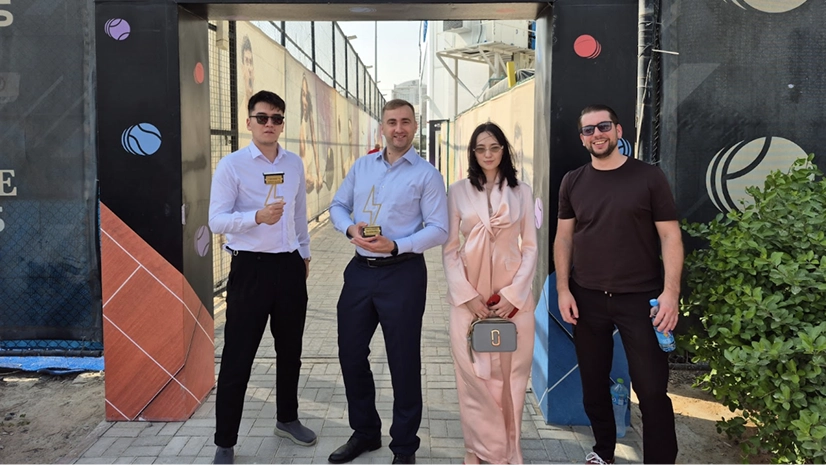À medida que o local de trabalho se torna cada vez mais dependente da tecnologia, os funcionários passam mais tempo nas telas do que nunca. De reuniões virtuais à sobrecarga de E-mails, a fadiga digital surgiu como um sério desafio, afetando o foco, a produtividade e o bem-estar geral. Entender os sinais de fadiga digital e implementar estratégias para mitigar seus efeitos pode ajudar as equipes a manter um equilíbrio mais saudável entre vida profissional e pessoal e prosperar na era digital.
O Que É Fadiga Digital?
A fadiga Digital ocorre quando a exposição prolongada a telas e ferramentas digitais leva à exaustão mental, redução do foco e desconforto físico. É um problema comum nos locais de trabalho modernos, onde as tarefas geralmente exigem envolvimento constante com os dispositivos. Os sintomas incluem:
- Sintomas mentais: dificuldade de concentração, irritabilidade ou sensação de estar sobrecarregado.
- Sintomas físicos: cansaço visual, dores de cabeça e fadiga.
- Sintomas emocionais: diminuição da motivação, estresse e até burnout.
Reconhecer esses sinais precocemente é crucial para lidar com a fadiga digital antes que ela afete a produtividade e o bem-estar.
Causas comuns de fadiga Digital
O ambiente de trabalho moderno apresenta diversos fatores que contribuem para a fadiga digital:
- Tempo de tela excessivo: horas prolongadas gastas em Computadores, tablets ou telefones.
- Reuniões consecutivas: uma agenda lotada de reuniões virtuais deixa pouco tempo para pausas.
- Sobrecarga de Informações: um fluxo constante de E-mails, notificações e mensagens pode ser esmagador.
- Ergonomia deficiente: o posicionamento inadequado da tela e a disposição dos assentos podem agravar o desconforto físico.
Entender esses gatilhos permite que as organizações projetem intervenções eficazes.
Estratégias para evitar a fadiga Digital
Reduzir a fadiga digital requer uma combinação de práticas individuais e suporte organizacional. Veja estratégias acionáveis para criar um ambiente de trabalho digital mais saudável:
1. Incentive Pausas Regulares
- A regra 20-20-20: aconselhe os funcionários a desviar o olhar de suas telas a cada 20 minutos a algo a 20 pés de distância por pelo menos 20 segundos.
- Agende um tempo sem tela: crie pausas curtas no dia de trabalho para permitir que os funcionários se desconectem e recarreguem.
2. Otimize As Práticas De Reunião
- Reduza a frequência das reuniões: incentive a comunicação assíncrona sempre que possível, como o uso de ferramentas colaborativas para atualizações.
- Limite as durações das reuniões: Defina um padrão para reuniões mais curtas e mais focadas para evitar a fadiga do Zoom.
- Apresente dias sem Reunião: dedique um dia da semana para focar o tempo sem reuniões.
3. Promova Hábitos Digitais Saudáveis
- Defina limites para notificações: ensine os funcionários a gerenciar notificações desativando alertas não essenciais durante o horário de foco.
- Use filtros de Luz Azul: equipe os dispositivos com software que reduza a exposição à luz azul para minimizar o cansaço visual.
- Incentive a desintoxicação Digital: motive os funcionários a limitar o tempo de tela fora do trabalho para recarregar totalmente.
4. Melhore A Ergonomia
- Ajuste as estações de trabalho: Forneça orientações ou equipamentos para Configurações ergonômicas da mesa, como cadeiras ajustáveis e Suportes para monitores.
- Movimento de apoio: incentive os funcionários a ficar de pé, alongar-se ou caminhar periodicamente para reduzir o esforço físico.
5. Fornecer Recursos De Saúde Mental
- Ofereça programas de Mindfulness: introduza sessões de mindfulness ou meditação para ajudar os funcionários a gerenciar o estresse.
- Fornecer serviços de aconselhamento: tornar o apoio à saúde mental acessível aos funcionários que sofrem de esgotamento ou ansiedade.
Fomentando uma cultura que reduz a fadiga Digital
As organizações desempenham um papel crítico na criação de um ambiente que minimize a fadiga digital. As equipes de liderança e RH podem adotar essas práticas:
- Defina expectativas claras: evite enviar e-mails ou mensagens fora do horário de trabalho, a menos que seja urgente.
- Celebre a produtividade, não as horas: mude o foco do número de horas trabalhadas para a qualidade dos resultados.
- Lidere pelo exemplo: os gerentes devem modelar hábitos digitais saudáveis, como fazer pausas e desconectar-se após o expediente.
Medindo o impacto das iniciativas Antifadiga
Acompanhar o sucesso de iniciativas para reduzir a fadiga digital ajuda as organizações a fazer ajustes informados. Considere estas métricas:
- Feedback dos funcionários: realize pesquisas para avaliar a satisfação com o equilíbrio entre vida profissional e pessoal e práticas digitais.
- Métricas de produtividade: monitore se os funcionários concluem tarefas de forma mais eficiente com tempo de tela reduzido.
- Indicadores de bem-estar: Acompanhe o absenteísmo, a rotatividade e as queixas relacionadas ao estresse para avaliar a melhoria.
Benefícios a longo prazo de lidar com a fadiga Digital
Quando as organizações reduzem ativamente a fadiga digital, elas desbloqueiam inúmeros benefícios:
- Foco aprimorado: os funcionários podem se concentrar melhor, levando a um trabalho de maior qualidade.
- Bem-estar aprimorado: redução do estresse e melhor saúde física melhoram o moral geral.
- Maior retenção: um ambiente de apoio incentiva os funcionários a permanecerem na empresa.
- Aumento da produtividade: uma força de trabalho bem descansada é mais eficiente e inovadora.
Conclusão
A fadiga Digital é um desafio crescente nos locais de trabalho centrados em tecnologia de hoje, mas não é intransponível. Você pode ler sobre experiências semelhantes no estudo de caso Playrix. Ao reconhecer os sinais, abordar as causas-raiz e promover hábitos digitais saudáveis, as organizações podem criar um ambiente em que os funcionários se sintam energizados, focados e apoiados. Ao fazer isso, eles não apenas melhoram o bem-estar individual, mas também melhoram o desempenho geral da equipe e o sucesso organizacional.

Qual é o nível de bem-estar na sua equipe?
.png) Participar da pesquisa
Participar da pesquisaCurso de Bem-Estar paraProfissionais de RH
.png) Inscrever-se
Inscrever-se



.png)





